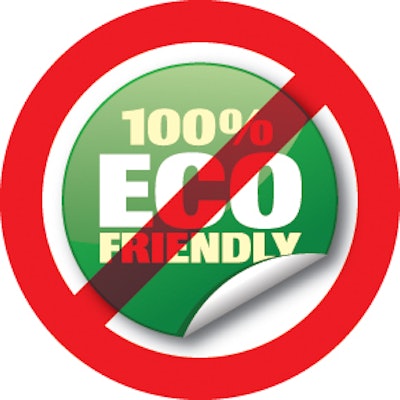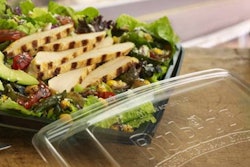At least 90% of these submissions failed on the first go-round, say reviewers Bob Lilienfeld of The ULS Report and Packaging Knowledge Group (PKG), and Tanja Carroll of Environmental Packaging Intl. (EPI). Following is a list compiled by these reviewers of the top eight mistakes, and how to avoid them:
1 Be specific in your claims. Virtually every claim reviewed described the product in question as being “sustainable” or the “most sustainable.” This claim is problematic. First, it is too general to be accepted under FTC guidelines. Second, it does not explain why these claims should be believed. The FTC also requires that you explain what specific benefit you are claiming, compared to which competitive product(s), and the relative or absolute difference(s) between the two.
2 Provide proof from third parties (research, suppliers, etc.). Neither comparative nor sustainability claims can be made in a vacuum. Pictures, statistics, and other supporting evidence are needed.
3 Check to see that compliance certificates are up-to-date. Before uploading the sustainable forestry certifications and heavy metals lab test results, make sure that they have not expired.
4 Provide supporting documentation for heavy metals limits. Many claims were rejected based on lack of supporting documentation. Specifically, either lab test results from a third party were not provided, or the lab test results did not state the detectable limit they used when performing the testing.
5 Be aware of your state’s renewable energy resources. Go to http://bit.ly/djHV8S for a link to U.S. Environmental Protection Agency data indicating the renewable energy generation per state.
6 Be clear with recycling, biodegradation, and compostability claims. In general, the potential for a product to be recycled, biodegraded, or composted does not provide enough support to claim recyclability, biodegradability, or compostability.
7 Be specific with source-reduction claims.
For example, “Uses less material” won’t cut it. “Uses 19% less paper than our previous product” is an acceptable way to claim source-reduction benefits.
8 Ensure statistical differences of 15% or more. To claim that your product is better along some measurable dimension, it must not only be better, it must also be statistically better. This means that the statistical probability that there is indeed a difference must be at least 90%. GreenerPackage.com’s reviewers gauge statistical significance by a relative difference of 15% or more.
See the complete article at: greenerpackage.com/node/2486



























